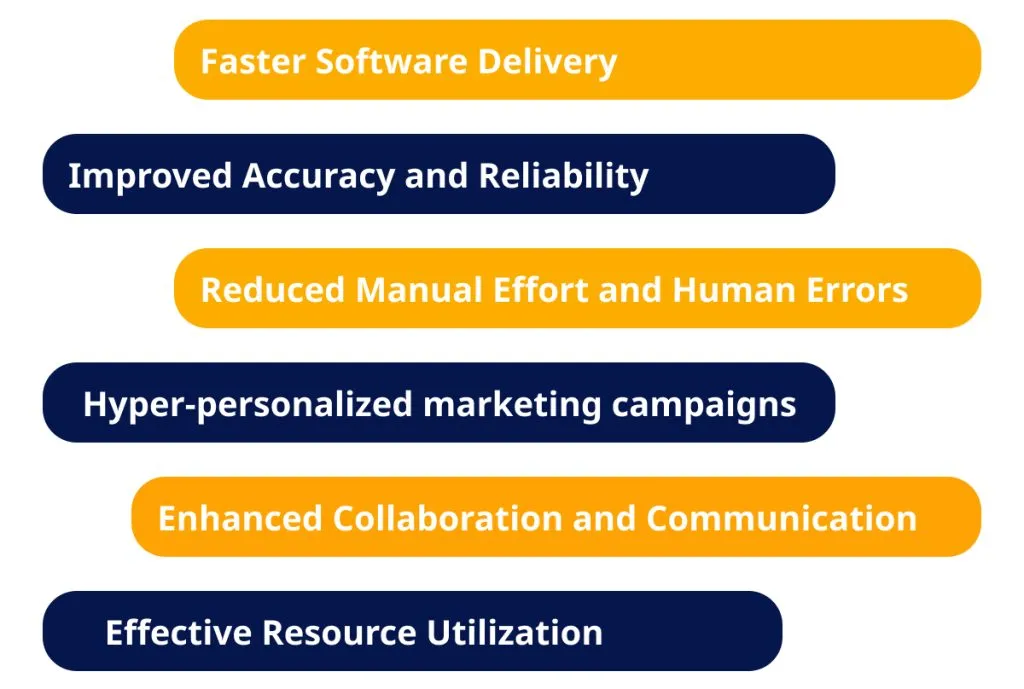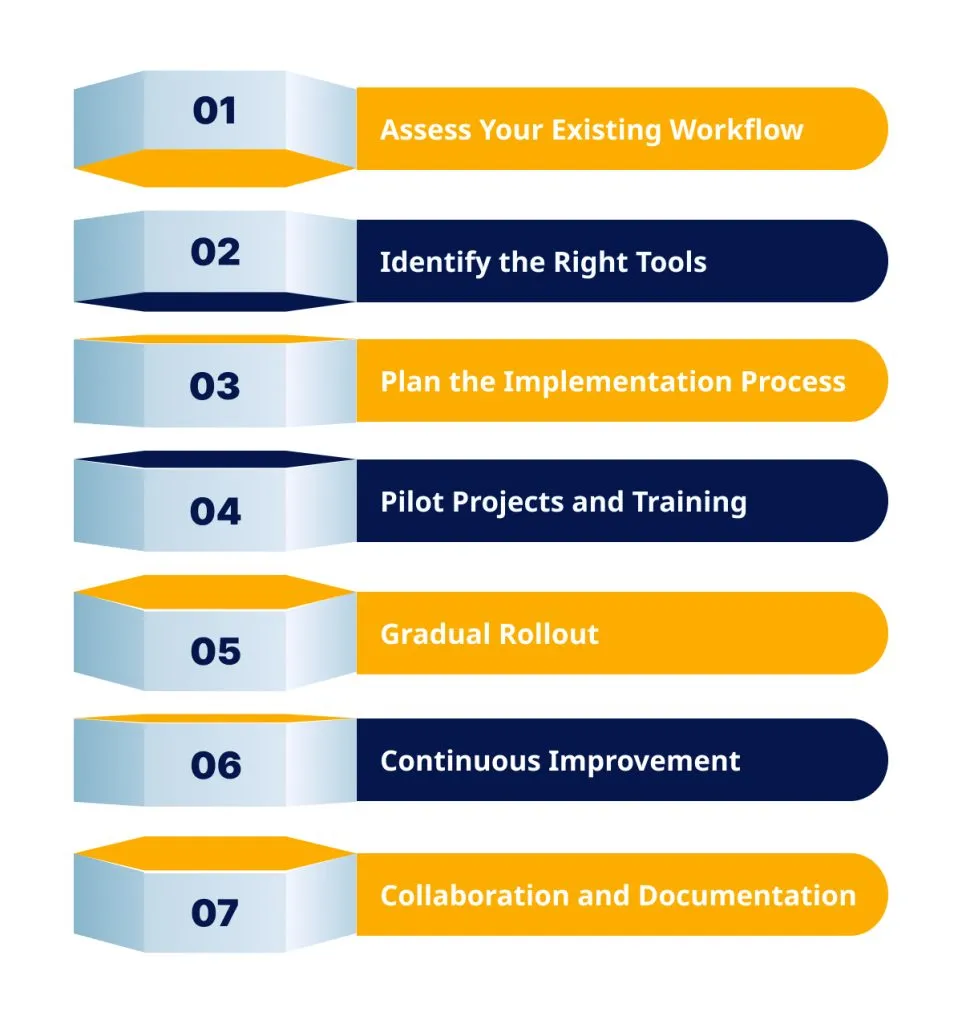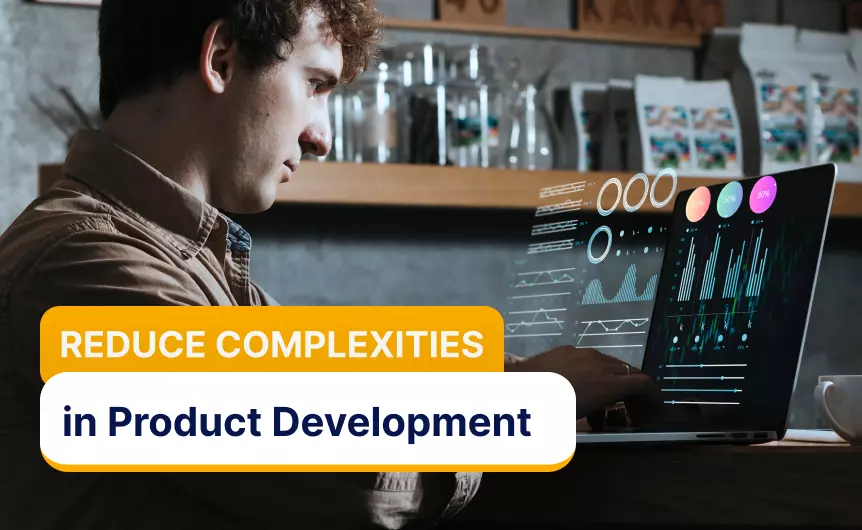Are you tired of spending countless hours on manual and repetitive tasks in software development? Do you want to boost your team’s productivity while improving the quality of your software? Look no further! Welcome to “The Ultimate Guide to Using Automation Tools in Software Development.”
In today’s fast-paced world, where efficiency is paramount, automation tools have emerged as game-changers for developers. According to recent studies, a staggering 75% of software development teams have reported significant time savings after implementing automation tools.
This comprehensive guide will give you an overview of the power of automation and show how to leverage these tools to streamline your development process and skyrocket your success. Get ready to embrace the future of software development solutions.
Understanding Automation Tools
Automation tools have become indispensable assets in the realm of custom software development services, empowering developers to streamline their workflows, enhance efficiency, and deliver high-quality products. But what exactly are automation tools, and why are they so crucial in the development process?
At their core, automation tools are software programs designed to automate manual and repetitive tasks involved in software development. These tools leverage scripts, algorithms, and predefined configurations to automate tasks that would otherwise need human intervention. When you hire software app developers, they can automate these tasks, eventually saving time, reducing errors, and focusing on more strategic aspects of the development process.
Partner with ValueCoders to implement cost-effective automation strategies.
Types of Automation Tools
Automation tools play a significant role in custom software development services, offering functionalities to streamline processes and improve efficiency. Let’s explore some of the common types of automation tools used in the industry:
Testing Automation Tools
These tools automate the execution of test cases resulting in thorough and effective testing of software applications. Testing automation tools allow developers to design automated test scenarios that can repeatedly run to evaluate software functionality and find flaws.
These tools, such as Selenium and Appium represent just a few examples of the diverse array of QA testing tools listed by Functionize, designed to cater to different aspects of software testing – each tool with its unique strengths, ranging from web automation to mobile application testing and unit testing frameworks. Their selection enables developers to tailor their testing strategies to the specific needs of their projects, which will ensure both efficiency and effectiveness in detecting software anomalies and improving quality.
Deployment Automation Tools
Packaging, setting, and deploying software applications across diverse environments is automated by deployment automation tools. These tools replace manual deployment, decreasing the possibility of human error and assuring reliable and consistent deployments. For instance, tools for deployment automation include Ansible, Bamboo, and Jenkins.
Continuous Integration (CI) Tools
CI tools facilitate the integration of code changes from multiple developers into a shared repository. They automate the build, test, and integration processes, enabling teams to detect and resolve integration issues early in the development cycle. CI automation tools in software development, such as Jenkins, Travis CI, and CircleCI, ensure that the software remains in a continuously deployable state.
Monitoring and Logging Tools
Software performance, behavior, and availability are carefully monitored and recorded using monitoring and logging tools. These automated data collection and analysis technologies let developers spot problems early on and take proactive measures to fix them. Monitoring tools like Nagios, New Relic, and Datadog provide real-time insights into application performance while logging tools like the ELK Stack (Elasticsearch, Logstash, and Kibana) assist in gathering and analyzing logs.
Task and Project Management Tools
Task and project management tools automate software development projects’ tracking, scheduling, and collaboration aspects. These tools enable teams to manage and prioritize tasks, assign responsibilities, and monitor progress efficiently. Examples of task and project management tools include Jira, Trello, and Asana.
Every type of automation tool has a distinct function within the software development lifecycle, optimizing operations and boosting output. Development teams may speed up delivery, increase quality, and collaborate effectively by utilizing the correct set of automation technologies.
Also Read: Top Software Development Tools, Frameworks, And Libraries
Benefits of Using Automation Tools in Software Development
Utilizing automation tools in software development brings forth numerous benefits, revolutionizing the way developers work and improving the overall efficiency of the process.
Here are some key advantages of incorporating automation tools into software development:
Faster Software Delivery: Automation tools significantly accelerate the development lifecycle by automating time-consuming and repetitive tasks. Manual activities like code testing, deployment, and integration can be automated, reducing the overall time required to deliver software. This allows teams to meet tight deadlines, respond quickly to market demands, and gain a competitive edge.
Improved Accuracy and Reliability: Automation tools eliminate the risk of human errors and inconsistencies inherent in manual tasks. When you hire app developers, they automate processes like testing and deployment and ensure that every step is executed precisely according to predefined configurations. This enhances the accuracy and reliability of software, minimizing the occurrence of bugs and issues in production.
Reduced Manual Effort and Human Errors: Manual tasks in software development demand significant time and effort from developers, making them prone to human errors. Automation tools enable developers to concentrate on more critical and innovative work areas by streamlining these tasks. Software development becomes more effective and error-free due to decreased human labor required. Productivity is also increased.
Enhanced Collaboration and Communication: Automation tools frequently have built-in team communication and collaboration features. These tools enable seamless sharing of code, test results, and project updates, facilitating effective collaboration and ensuring everyone is on the same page. Improved communication and transparency foster better teamwork, coordination, and knowledge sharing among developers, testers, and stakeholders.
Effective Resource Utilization: By automating repetitive tasks, automation tools in software development optimize the allocation of resources within a development team. Developers can refocus their time and efforts on more valuable tasks, such as creating novel features or resolving challenging problems. The outcome is: better resource use, improved production, and a higher return on investment.
Let ValueCoders implement robust automation tools to reduce risks.
Choosing the Right Automation Tools
A crucial choice that can greatly impact your team’s productivity and success is choosing the right automation tools for your software development projects. To help you select the appropriate automation tools, keep the following points in mind:
Project Requirements: Begin by assessing the specific requirements of your project. Consider the nature of your software, the development methodology being followed, and the tasks that could benefit from automation. Identify the team’s pain points and challenges of the software development company you have partnered with, such as testing, deployment, or integration, and prioritize the tools that address those specific needs.
Compatibility and Integration: Ensure that the automation tools you choose are compatible with your existing development environment, programming languages, frameworks, and infrastructure. Compatibility issues can lead to inefficiencies and integration complexities. Look for tools that seamlessly integrate with your current toolchain to avoid disruption to your workflow.
Scalability and Flexibility: Consider the scalability of automation tools in software development. Will they accommodate your future growth and evolving needs? As your projects and team expand, the tools should be able to scale accordingly. Additionally, prioritize tools that offer flexibility in terms of customization and configuration, allowing you to tailor them to fit your unique requirements.
Community Support and Documentation: Evaluate the support and documentation available for the automation tools you are considering. A strong community and active support channels can be invaluable when encountering challenges or needing assistance. Check for comprehensive documentation, tutorials, forums, and online resources that can assist you in maximizing the potential of the tools.
Also Read: Top Automation Tools to Streamline Your Workflow
Cost and Return on Investment: Assess the cost of the automation tools, considering both upfront expenses and long-term maintenance costs. Evaluate the return on investment (ROI) they offer by estimating the time and effort saved, increased productivity, and improved quality. Strive for a balance between cost and the tools’ value to your development process. Hire software developers in India for cost-effective solutions.
Trial and Evaluation: Whenever possible, conduct trials or proofs of concept with potential automation tools before committing to them. This will allow your team to assess the tools’ usability, functionality, and effectiveness firsthand. It’s essential to involve key stakeholders and gather feedback to ensure the chosen tools align with their needs.
By carefully considering these variables, you can make an informed selection and select automation solutions that align with your project needs, smoothly integrate with your current workflow, and serve as a solid foundation for effective and fruitful software development.
Remember, the right automation tools in software development can significantly enhance your team’s capabilities and contribute to the overall success of your projects.
Implementing Automation Tools in Software Development Process
Implementing automation tools in software development process requires careful planning and execution to ensure successful adoption and maximum benefit. Here is a step-by-step guide to help you effectively implement automation tools:
Assess Your Existing Workflow: Begin by assessing your current software development workflow. Identify areas that can benefit from automation, such as testing, deployment, or build processes. Understand the pain points, bottlenecks, and areas of inefficiency that automation tools can address.
Identify the Right Tools: Based on your assessment, research and identify the automation tools that align with your project requirements and address your specific pain points. Consider factors such as functionality, compatibility, scalability, and community support. Shortlist a few tools that meet your criteria and evaluate them further.
Plan the Implementation Process: Develop a detailed implementation plan outlining the steps, timeline, and resources required. Identify critical milestones and set realistic goals for each phase. Determine who will be responsible for the implementation, ensuring team members have the necessary skills and knowledge to work with the selected tools.
Also Read – How AI in Business Process Automation is Changing the Game
Pilot Projects and Training: Start with pilot projects to test the selected automation tools in software development in a controlled environment. This allows you to gain practical experience, evaluate the effectiveness of the tools, and identify any challenges or modifications needed. Train your team members to familiarize them with the tools and ensure they understand how to leverage their capabilities effectively.
Gradual Rollout: Once the pilot projects have been successful, gradually roll out the automation tools across your software development process. Prioritize critical areas and stages where the tools can impact most. Monitor and measure the results to track the effectiveness and ROI of the implemented tools.
Continuous Improvement: Automation is an iterative process, and evaluating and improving your automation setup is essential. Gather feedback from your team members and stakeholders, and incorporate their suggestions for further optimization. Stay updated with new features, updates, and best practices related to automation tools to ensure you’re making the most of their capabilities.
Collaboration and Documentation: Encourage collaboration among team members to share best practices, knowledge, and lessons learned. Establish documentation and guidelines on how to use the automation tools effectively. This ensures consistency and empowers new team members to quickly onboard and contribute.
Following these steps, you can smoothly implement automation tools in software development process. With proper planning, training, and continuous improvement, automation can bring significant efficiency gains, reduce errors, and enhance productivity throughout your development lifecycle.
Trust ValueCoders to integrate reliable automation solutions.
Best Practices for Using Automation Tools
While implementing automation tools in software development process is a significant step forward, following best practices to maximize their effectiveness and reap the full benefits is essential. Here are some significant best practices for using automation tools:
Regularly Update and Maintain the Tools: Keep your automation tools up-to-date by installing the latest versions and patches. Regularly review the tool’s documentation and release notes to stay informed about new features, bug fixes, and improvements. Set up a maintenance schedule to ensure the tools function optimally and promptly address any issues.
Monitor and Analyze Automation Results: Establish a robust monitoring and analysis process to track the performance of your automation tools. Monitor the execution of automated tasks, identify failures or errors, and generate detailed reports. Analyze the results to gain insights into your automation strategy’s effectiveness, identify improvement areas, and optimize your automated workflows.
Collaborate with Team Members: Foster collaboration and communication among team members regarding using automation tools in software development. Encourage sharing of knowledge, experiences, and best practices. Collaborate with testers, developers, and other stakeholders to define automation goals, refine automation test cases, and continuously improve the automation process.
Maintain Test Data and Environments: Ensure that automation’s test data and environments are well-maintained and up-to-date. Regularly refresh test data to avoid data corruption or outdated information. Keep the test environments consistent and aligned with the production environment to ensure accurate results and minimize issues related to environment discrepancies.
Continuously Learn and Improve: Partner with a custom software development company that stays updated with industry trends, emerging technologies, and advancements in automation tools. Participate in conferences, webinars, and forums to learn from experts and share experiences with the automation community. Continuously evaluate your automation strategy and identify enhancement, optimization, and innovation opportunities.
Document Automation Processes and Workflows: Document the automation processes, workflows, and configurations to ensure clarity and consistency. Create comprehensive documentation that outlines the steps involved, tools used, and any customizations or specific configurations. This documentation serves as a reference for new team members and guides troubleshooting and future enhancements.
Regularly Review and Refine Automation Strategy: Set aside time to review your automation strategy and assess its effectiveness periodically. Evaluate the return on investment (ROI) of your automation efforts, measure the impact on productivity and quality, and identify areas for refinement. Adjust as needed to align with evolving project requirements, emerging technologies, and industry best practices.
By following these best practices, you can optimize the use of automation tools in software development process. When implemented and managed effectively, automation enhances efficiency, accelerates delivery, and improves the overall quality of your software applications.
Wrapping Up
Automation tools have become indispensable assets in modern software development, revolutionizing how developers work and accelerating the delivery of high-quality software. By embracing automation tools in software development, you can streamline your workflows, reduce manual effort, improve accuracy, and enhance collaboration within your team.
Choosing the right partner is crucial to unlock the full potential of automation tools and ensure seamless integration into your development process. ValueCoders, a trusted leader in software development solutions, offers expertise in automation tools and technologies. Our experienced professionals can guide you in selecting and implementing the most suitable automation tools tailored to your specific project requirements.
Don’t miss out on the opportunity to supercharge your software development process with automation. Contact us today and embark on a journey towards increased efficiency, improved quality, and accelerated success in software development.










